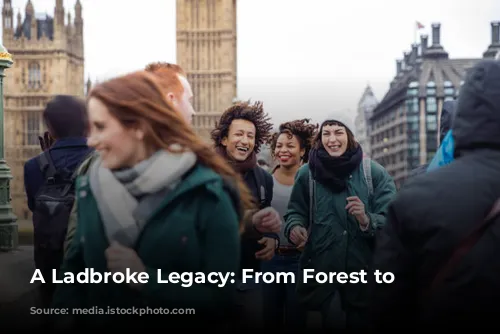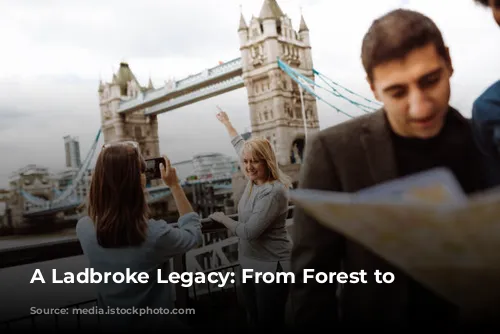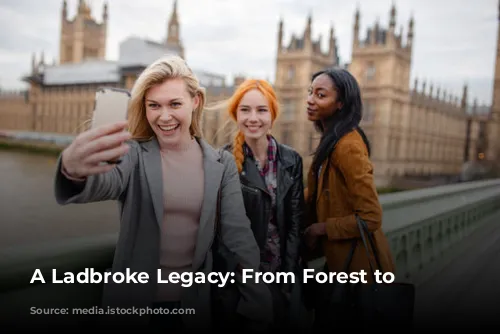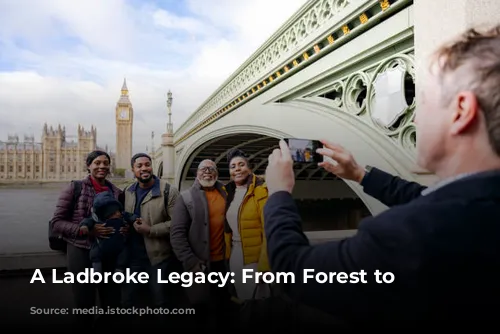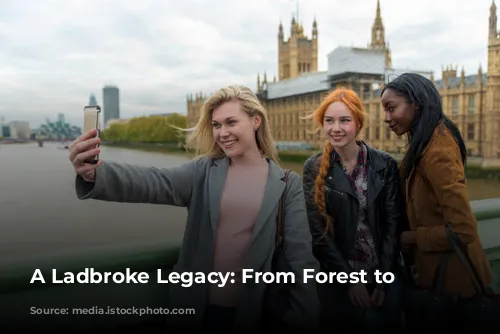Before 1841, the land that is now the Ladbroke Conservation Area went through a fascinating journey of ownership and transformation. From a forested expanse to a bustling urban development, its story reflects the changing times and influential figures who shaped its destiny.

Saxon Roots & Norman Conquest
Before the Norman conquest in 1066, the land that would become the Ladbroke Conservation Area was part of the vast Forest of Middlesex. It was under the control of Edwin, one of Edward the Confessor’s loyal followers. According to the Domesday Book, a detailed record of England compiled in 1086, the manor of “Chenesitun” (Kensington) belonged to Edwin. However, following the Norman conquest, Edwin lost his land. William the Conqueror, the victorious Norman king, granted the manor to one of his loyal followers, Aubrey de Vere.
The de Vere family, who would later become Earls of Oxford, held the Manor of Kensington for over five centuries. During their reign, they subdivided the manor, creating smaller estates including the Manor of Notting Barns, which encompassed the future Ladbroke area.
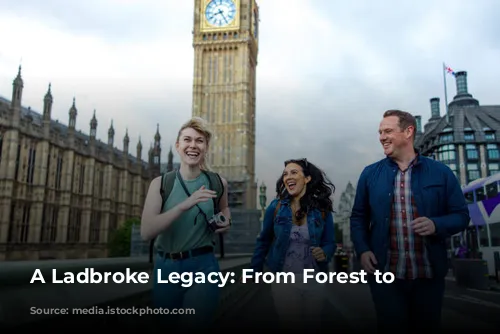
Shifting Fortunes During the Wars of the Roses
The tumultuous Wars of the Roses, a period of conflict between the Houses of York and Lancaster for the English throne, had a significant impact on the Manor of Notting Barns. In the 15th century, John de Vere, the 12th Earl of Oxford, and his son Aubrey, were executed for their allegiance to the House of Lancaster. Their lands, including Notting Barns, were seized by King Edward IV.
The manor then passed to Edward IV’s brother, Richard III, who later ascended to the throne. However, Richard III was overthrown in 1485 by Henry VII, the first Tudor monarch, at the Battle of Bosworth Field.
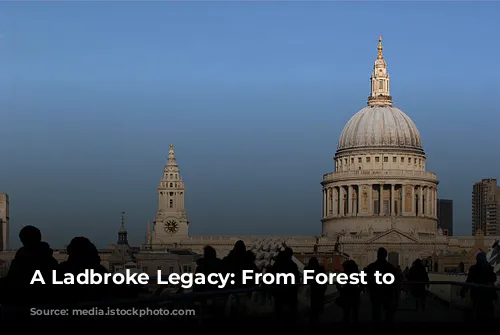
The Tudor Era: From Royal Grant to Charitable Purpose
John de Vere, the 13th Earl of Oxford, had supported Henry VII at Bosworth Field and was rewarded with the restoration of his lands, including Notting Barns. However, financial challenges forced him to sell the Manor of Notingbarons to William, Marquis of Berkeley. Subsequently, the manor was purchased by Lady Margaret Beaufort, Henry VII’s mother.
Lady Margaret valued the manor at £10 per year and described it as a dwelling with farmland and woodland. She bequeathed the manor, along with other properties, to the Abbot, Prior, and Convent of Westminster. Her will stipulated that the income from the lands would be used to finance masses for her soul in Westminster Abbey and to support the colleges and professorships she had established at Oxford and Cambridge.
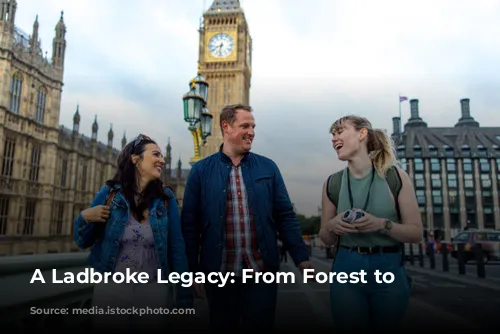
From Abbot to Citizen: Leaseholders and Shifting Boundaries
Following Lady Margaret Beaufort’s death, the Abbot of Westminster leased the manor to Robert Fenrother, a wealthy London citizen. Fenrother later transferred the lease to his daughter upon her marriage to Henry White.
The boundaries of the manor evolved over time, with land being both added and subtracted. By the early 1530s, the manor encompassed arable land, meadows, woodland, moor, and furze and heath. The Whites lived in nearby Westbourne and entrusted the lease of the manor to their children upon their deaths.
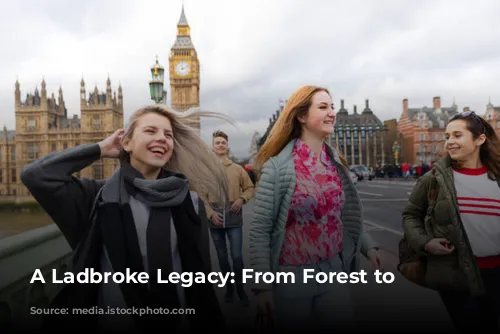
Royal Seizure and Exchange: From Abbey to Crown
In a significant turn of events, Henry VIII seized the lands of the Abbey of Westminster, including Notting Barns. Despite this, he confirmed the ownership of Notting Barns to Robert White, the eldest son of Henry White.
Henry VIII, however, had his eyes on the manor of “Knotting Barns” and pressured Robert White to exchange it for another manor in Southamptonshire. This transaction marked a shift in ownership from the Abbey of Westminster to the Crown.
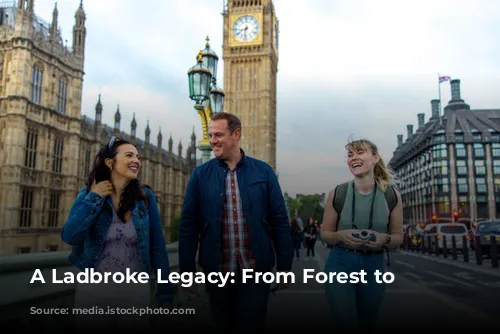
From Crown to Noblemen: Shifting Hands and Financial Woes
Edward VI, Henry VIII’s son, granted the Manor of Knotting Barns to Sir William Paulet, who later became Lord High Treasurer and Marquis of Winchester. However, Sir William Paulet was deeply in debt to Queen Elizabeth I and was forced to surrender the manor to her.
Queen Elizabeth I granted the manor to William Cecil, Lord Burleigh, her trusted Secretary of State. Following Lord Burleigh’s death in 1598, the manor was sold to Walter Cope, the builder of Holland House.
Walter Cope, in turn, sold the Manor of Notting Barns to Sir Henry Anderson, Sheriff of London. The Anderson family remained owners until the death of Sir Richard Anderson, likely Sir Henry’s grandson, in 1765. By this time, the manorial system had largely dissolved, and the ownership of the land that would become the Ladbroke estate was likely fragmented.

Ladbroke’s Legacy: From Open Country to Urban Development
Richard Ladbroke, a member of a wealthy banking family, purchased the 170 acres of open countryside that would become the Ladbroke Estate. The land extended from Holland Park Avenue to the south, Portland Road and Pottery Lane to the west, Portobello Road to the east, and almost as far north as Lancaster Road.
Richard Ladbroke’s son, also named Richard, inherited the estate. When Richard Ladbroke the son died without children, he left a life interest in the land to his mother and sisters, and the remainder to his nephews and a distant cousin.
The estate passed to Richard Ladbroke’s surviving nephew, James Weller, who added Ladbroke to his name as per the will’s conditions. James Weller Ladbroke obtained an Act of Parliament that allowed him to grant 99-year leases of the land, paving the way for development.
James Weller Ladbroke entrusted the management of the development to the renowned architect and surveyor, Thomas Allason. Allason devised a plan featuring a central road (now Ladbroke Grove), a major east-west street (now Ladbroke Road), an enormous circular space (partially realized), and communal gardens.
The first two agreements for development were signed with Joshua Flesher Hanson and Ralph Adams. Hanson focused on the area south of Ladbroke Grove and north of Holland Park Avenue. Adams developed the land between Ladbroke Road and Portland Road, with the exception of a farm on the site of what is now the Mitre public house.
The development of the estate continued with contributions from Robert Cantwell and John Drew. Cantwell built houses on Holland Park Avenue and Ladbroke Terrace, while Drew completed houses on Ladbroke Grove and Holland Park Avenue.
John Whyte, a leaseholder of Ladbroke, established a racecourse, known as the Hippodrome, on a hill where St John’s Church now stands. The Hippodrome, however, faced challenges due to its location and the heavy clay soil.
The Ladbroke Estate, once open farmland, was transformed into a residential area with a mix of grand houses and terraces. This fascinating journey from a forested expanse to a bustling urban development laid the groundwork for what is now the Ladbroke Conservation Area.
